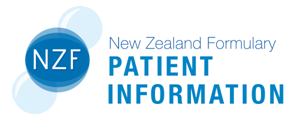What does it do?
Nicotine replacement therapy (patch, gum, lozenge, inhaler or spray) is used to relieve nicotine (smoking) withdrawal symptoms and help you to stop smoking.
Before you start
- Tell your health professional if you have heart or skin problems, or diabetes.
- Tell your health professional if you are pregnant, planning to become pregnant, or breastfeeding.
How should you use it?
Use nicotine replacement therapy as directed.
Use as part of a quit smoking plan from a health professional.
What if you forget a dose?
Patch:
Remove the old patch, apply a new patch as soon as possible and continue as directed.
Gum, lozenge, inhaler or spray:
Should an occasional dose be missed it need not be taken later.
Can you take other medicines?
Tell your pharmacist or doctor about all medicines or treatments that you may be taking, including vitamins, herbal products or recreational drugs.
What side effects might you notice?
| Side Effects | Recommended action |
|---|---|
|
Fast or irregular heartbeat |
Tell your doctor |
|
Patch - skin rash, redness or itch where patch has been applied, strange dreams Gum, lozenge, inhaler or spray – more saliva than usual, sore mouth or throat, stomach upset, hiccups, burping |
Tell your health professional if troublesome |
If you notice any other effects, discuss them with your doctor or pharmacist.
Other information:
- If you are still using nicotine replacement therapy after 3 months, discuss with your health professional.
- You might experience withdrawal symptoms when you quit smoking. These may include trouble sleeping, headache, eating more, or feeling restless, anxious or dizzy.
- Avoid acidic drinks (e.g. coffee, tea, soft drinks) 15 minutes before using nicotine gum, lozenge, inhaler or spray. These drinks may stop nicotine working properly.
- Do not tear or cut nicotine patches.
- Some procedures (e.g. MRI scan) may overheat the patch and burn your skin. Discuss with your health professional before your procedure.
- Dispose of nicotine patches by folding the patch in half with the sticky sides together. Make sure to dispose of it out of the reach of children.
This leaflet contains important, but not all, information about this medicine.
Prepared by the MyMedicines Committee at Christchurch Hospital, Te Whatu Ora - Waitaha, New Zealand. March 2023
For more general information about this sheet and its contents, see: What does a My Medicines sheet cover?
Te Reo Māori
Te Reo Māori information sheets supported by Health Quality and Safety Commission New Zealand
Web links for this sheet in different formats
Click on buttons to copy web addresses for this leaflet:
If your browser does not automatically copy these links use its copy command instead.
About My Medicines
My Medicines Patient Information Leaflets (PILs) contain important, but not all, information about the medicines they describe.
For more information about the sheets, see: What does a My Medicines sheet cover?
My Medicines is developed by a team at Te Whatu Ora – Waitaha. Our team is made up of doctors, pharmacists, and a non-medical person to help us keep to plain language. We also discuss our information with specialist health professionals or groups when needed

